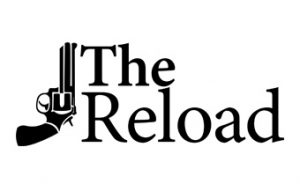If you or someone you know is struggling with suicidal thoughts or mental health matters,
please call the Suicide & Crisis Lifeline at 988 or 800-273-8255, or visit 988lifeline.org.
Convened as a cross-sector, cross-partisan group, the Dialogue forged trust, deepened mutual understanding,
and identified solutions to address the urgent issue of preventing firearm suicide.
The Vision
Suicide deaths by firearm are not inevitable. Suicidal ideation and periods of acute crisis are often short in duration, so safe practices and well-constructed interventions can save lives.
Dialogue participants sought not to stigmatize or blame, but to build understanding among gun owners and non-gun owners. Convergence facilitators fostered this environment by building an awareness that the individuals from both groups are incredibly diverse, with a wide range of cultural identifications based on geography, gender, income group, race, sexual orientation, and beyond.
Any person struggling with suicidal ideation should receive competent care, support, and resources. Participants of the Dialogue worked hard to avoid the pitfalls of well-worn debates that fall back on generalizations, which alienate those from differing backgrounds and perspectives.
The Problem
Across the political spectrum, there is a lot of misunderstanding regarding the challenge of preventing firearm suicide and how to discuss it. The Dialogue’s comprehension of causal issues and collaborative solutions came from the hard work of listening and shared learning – from breakdowns of firearm suicide data by demographics to understanding the complexities of gun ownership. The two main learnings were:
- Suicide rates differ across demographics and many intersectional identities; and, who owns guns and the reasons why they own guns, are equally as heterodox.
- There is stigma around seeking help and pervasive myths about what getting help will look like. All of this impacts the language, messengers, and messages that will be most effective at reducing firearm suicide. Read the findings section in the final report to learn more.
Convergence Consensus Solutions Blueprint
Increase and expand funding for programs and their subsequent evaluation that seek to prevent suicides by firearm.
Programs and initiatives focused on firearm suicide prevention need more funding, with the recognition that public funding may be limited to initiatives with a long-established track record. The report provides private, philanthropic funders with guidance in their work to support firearm suicide prevention.
Funding should cover both promising, innovative efforts built on established principles, as well as those with strong, evidence-informed track records.
Highlight current work by firearms groups and others to promote and expand their suicide prevention reach and scope.
Gun owners, gun rights groups, and the gun industry should be supported, encouraged, and incentivized to be outspoken in ways that strategically drive behavior change to prevent firearm suicide.
Increase and expand firearm suicide prevention research.
Funders, both public and philanthropic, should study suicide, firearms, and suicide prevention strategies via partnerships with scientists, clinicians, consumers of mental health services, those with a range of lived experience, gun owner-aligned groups, and others.
Amplify education on lethal means and suicide prevention to drastically reduce the number of firearm suicides in the United States.
Education campaigns, including bolstering existing efforts and filling gaps, are critical for change. The campaigns need to do a range of things, including accounting for the complex perceptions of gun ownership that are often dependent on race and ethnicity. In addition, diverse leaders – including legislators who can influence research and funding – need to share existing program information to expand their reach and scale.
Dialogue Members also propose an increase in training and competency regarding treatment for those with suicidal ideation and access to guns following best practices so firearm owners don’t forego care.
Demonstrate that dialogue can occur to rebuild trust, forge stronger mutual understanding, find common ground, and take action to prevent firearm suicide.
Recognizing that others possess good ideas and valuable insights, Dialogue Members invite people from across sectors and backgrounds to engage in constructive efforts, and work together to prevent these deaths.
Project Outcomes
Convergence Dialogue on Guns and Suicide Prevention Report Launch Event
Five Convergence Dialogue participants discuss their collaborative experience and report findings.
Be Brave for Prevention of Suicide by Firearms
“If there’s any national issue that feels stuck…it’s guns in America.” Listen to a discussion on strategies to overcome divides with Russell Krumnow, Director of the Convergence Dialogue on Guns and Suicide Prevention, and Dialogue participant Emmy Betz, MD, MPH on this Safe States podcast episode.
Convening of State Level Mental Health and Suicide Prevention Stakeholders
In May 2022, Convergence brought the Dialogue on Guns and Suicide Prevention to a broader community of practitioners in a cross-State Convening on Suicide Prevention. The event included stakeholders from across the public and private sectors working in mental health and suicide prevention more broadly with a focus on preventing suicide by any method. The event featured brief remarks from Dr. Deb Stone, lead behavioral scientist within the suicide prevention team at the CDC's National Center for Injury Prevention and Control.
Testimonials

In the News

The Hill: If We Reach Across The Gun Divide, We Can Prevent Firearm Suicides
The Hill published an op-ed by two participants of the Convergence Dialogue on Guns and Suicide Prevention. “It’s not every day that a long-time leader in the gun community and a physician devoted to preventing gun deaths and injuries work across the same table. When reaching across the divide, initial anxiety can give way to trust and ultimately collaborative problem-solving,” wrote Emmy Betz, MD, MPH and Rob Pincus.

Half Of Suicides Were By Gun; Suicides By All Methods Rose Sharply Among Minority Youth
In the Juvenile Justice Information Exchange, writer Micah Danney highlights findings on minority youth suicide rates from the Convergence Dialogue on Guns and Suicide Prevention report. Danney notes that this work “highlights interventions, including safe gun storage and efforts to safeguard the mental health of young people and others who may be suicidal.”

New Suicide Prevention Report Highlights The Importance Of Gun Owner Participation
“A new report signals a potential path forward for cross-ideological support on reducing gun suicide,” writes Jake Fogleman for The Reload, referencing the Convergence Dialogue on Guns and Suicide Prevention. Fogleman also emphasizes that “The [Dialogue], and the corresponding report, highlight the potential for non-coercive strategies to achieve a reduction in suicides among gun owners. While many proposals for reducing gun death rely on restrictionist policies or criminal penalties to influence behavior, the report findings eschewed calls for new laws. Instead, it focused on voluntary strategies like education campaigns and collaborations between outreach groups inside and outside the gun community.”
Interested in funding a project in the future?
Check out our donate page or contact our development team to learn more.


